Plucking a Swann (motion sensor)…
18So the staff at meh keep enabling me as a destroyer of all things meh, and the Swann… security… motion… beepy… things are the next chapter. First thing’s first: open the package, open a beer.
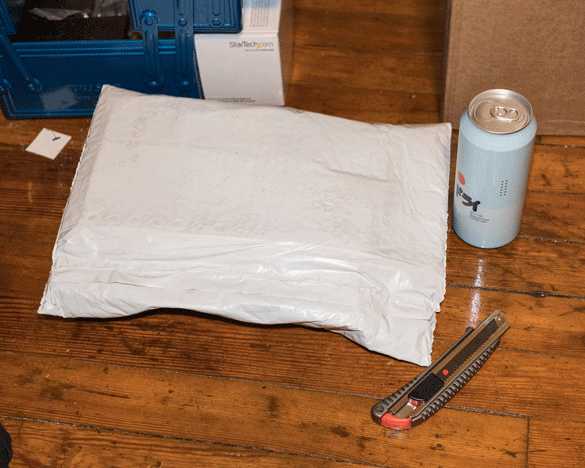
I’m immediately informed of how meh got ahold of these — no batteries included, and they require C cells?! Do those even exist anymore?! Whatever. Six free screws, and I’m in the receiver…
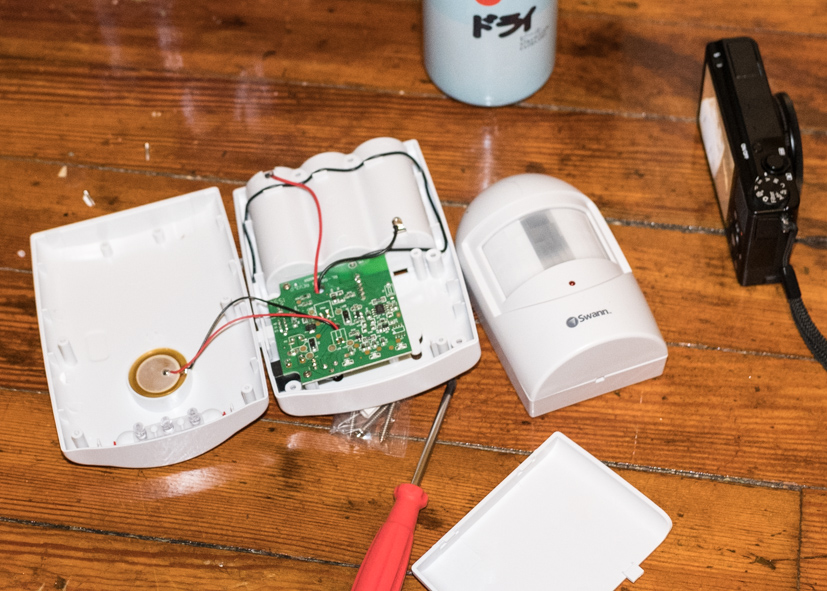
So, we’ve got a piezoelectric noisemaker on the left half. I try to spudge it loose, but it’s really glued on there and aside from, I don’t know, making a guitar pickup, I don’t really need it. You can see three wires all up in the (unfathomable C cell) battery compartment. Since this thing is actually pretty boring inside, let’s just get in on that.
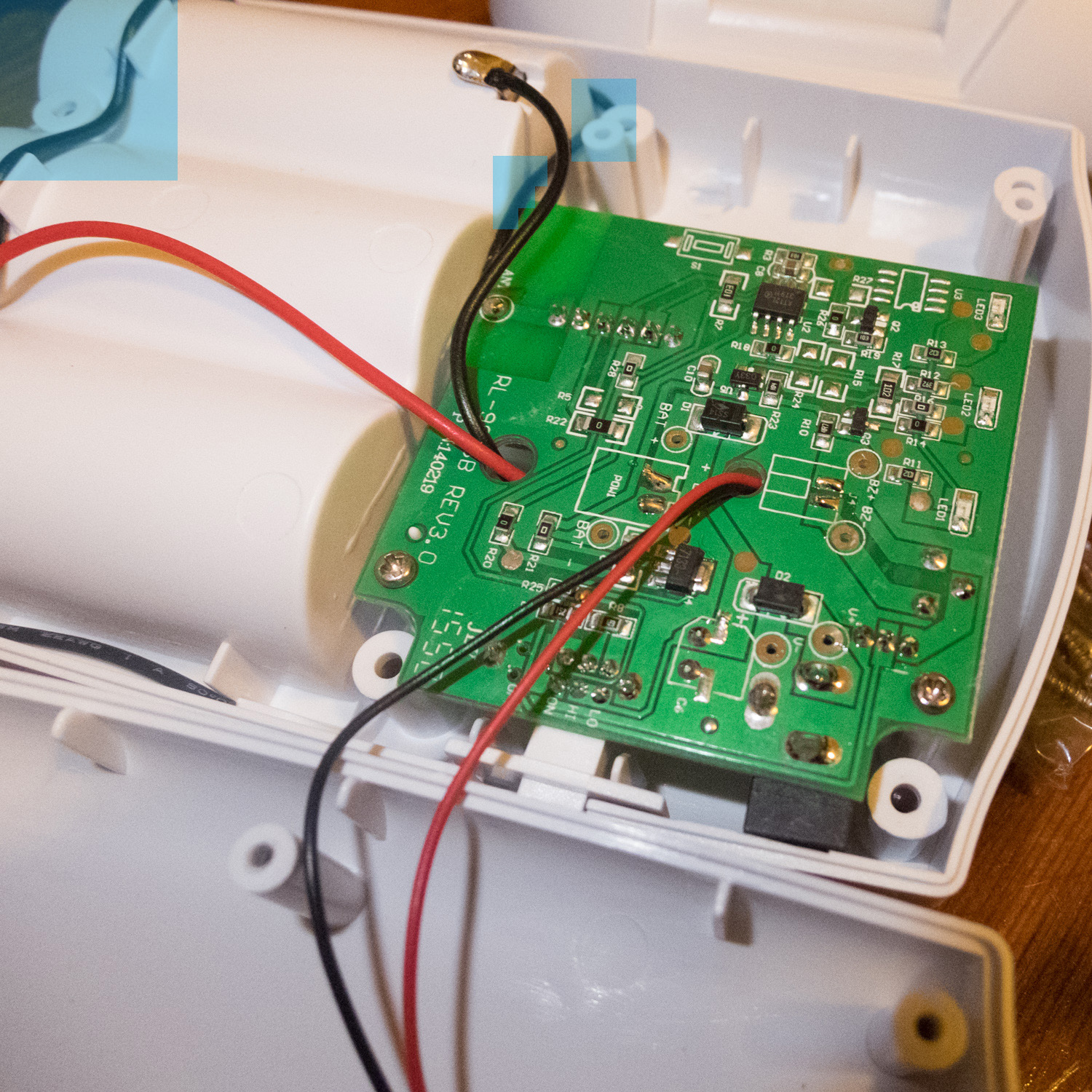
Highlighted in blue is the wire that serves as the antenna which is somehow the most interesting thing so far. This board is revision 3, apparently, that’s fun, right? Alright, we have two screws to make something exciting happen here, let’s roll a d20 for luck…
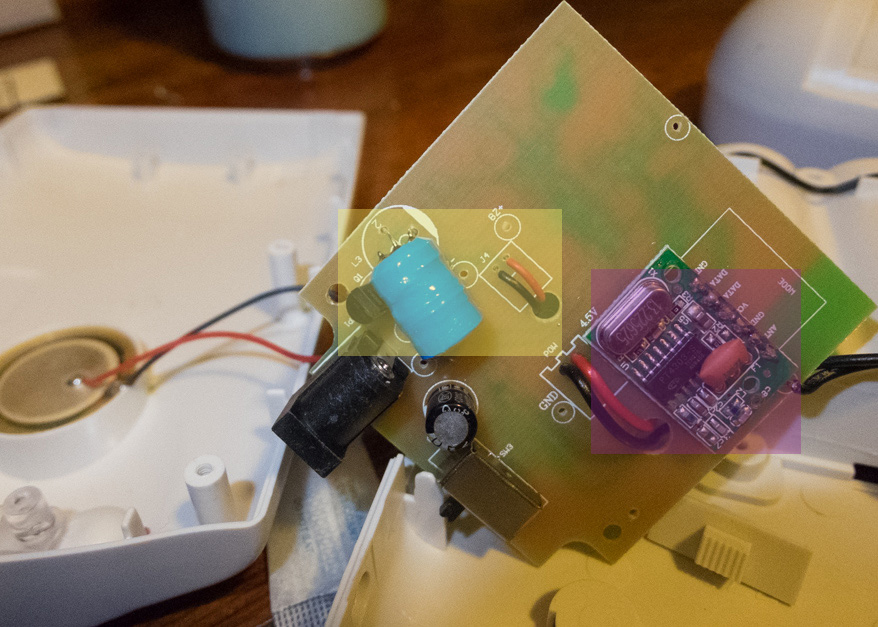
Urmm, hm. Well, the cap, the S8050 transistor (class b push/pull amp), and the wires in the yellow highlight are all bits of the BEEP BEEP part of this thing. The purple highlight is a daughterboard with a PT4303 heterodyne, an oscillator, etc., which are bits of the radio receiver. Neat. The other bit, the motion-sensy bit, it only has one free screw! What luck! But it isn’t falling apart… what’s this?!

Screw guard!? Time to break out the picks…

…and here we have a cork for the world’s tiniest merlot. What’s inside?!
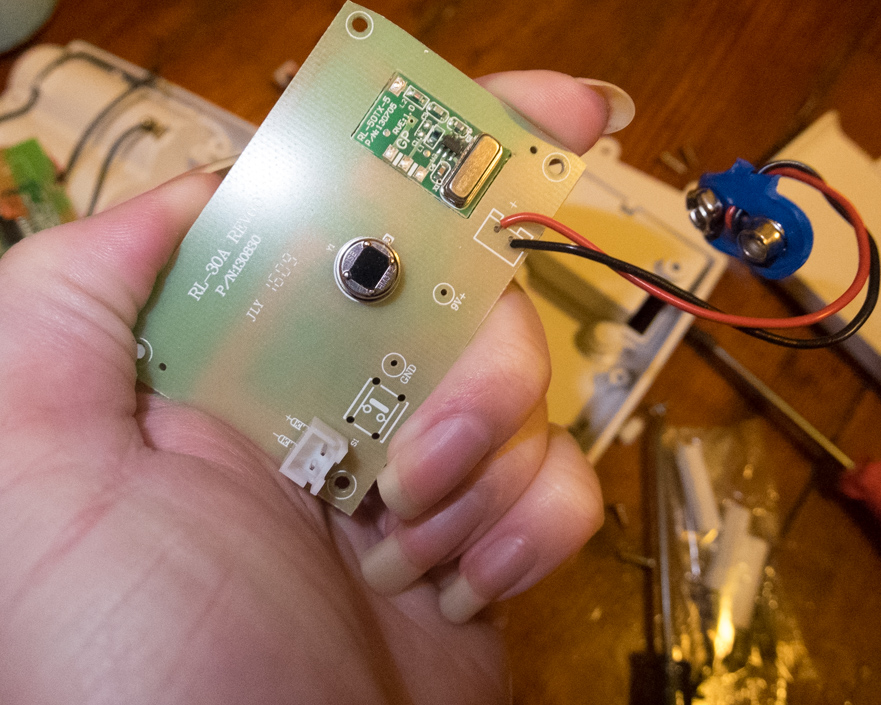
I didn’t highlight this one because I’m absent-minded, but in the middle we have an HM312 pyroelectric passive infrared sensor, aka The Thing That Detects The Motion. To the right of it, or above it in this weird photo, is a PCB that’s been soldered into a hole on the main PCB? That’s kind of a fun alternative to a daughterboard, I suppose. Anyway, this thing handles the radio transmission, much like the daughterboard on the other unit.
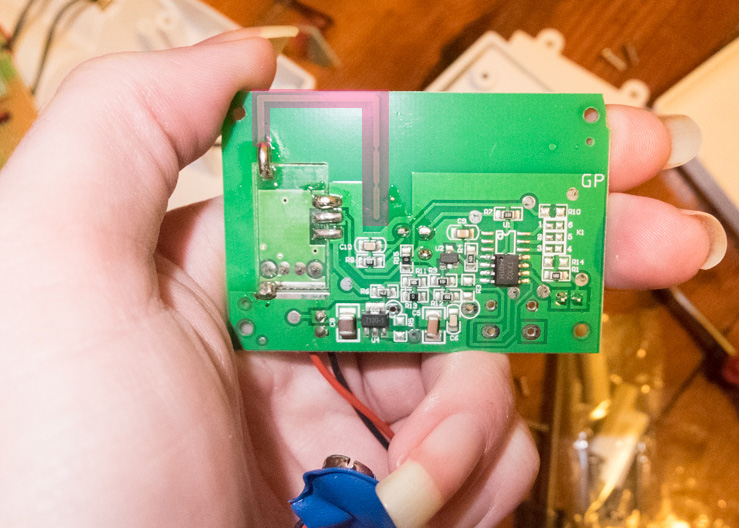
On the flipside, we have a bunch of tiny chips, they’re just dealing with the PIR sensor. The only interesting thing here (and that is a stretch) is highlighted in pink — no wires this time, the antenna for the transmitter is just a circuit trace.
Not much else to say about this unit. It’s pretty dull inside, but you can blame Swann for that. Until next time…
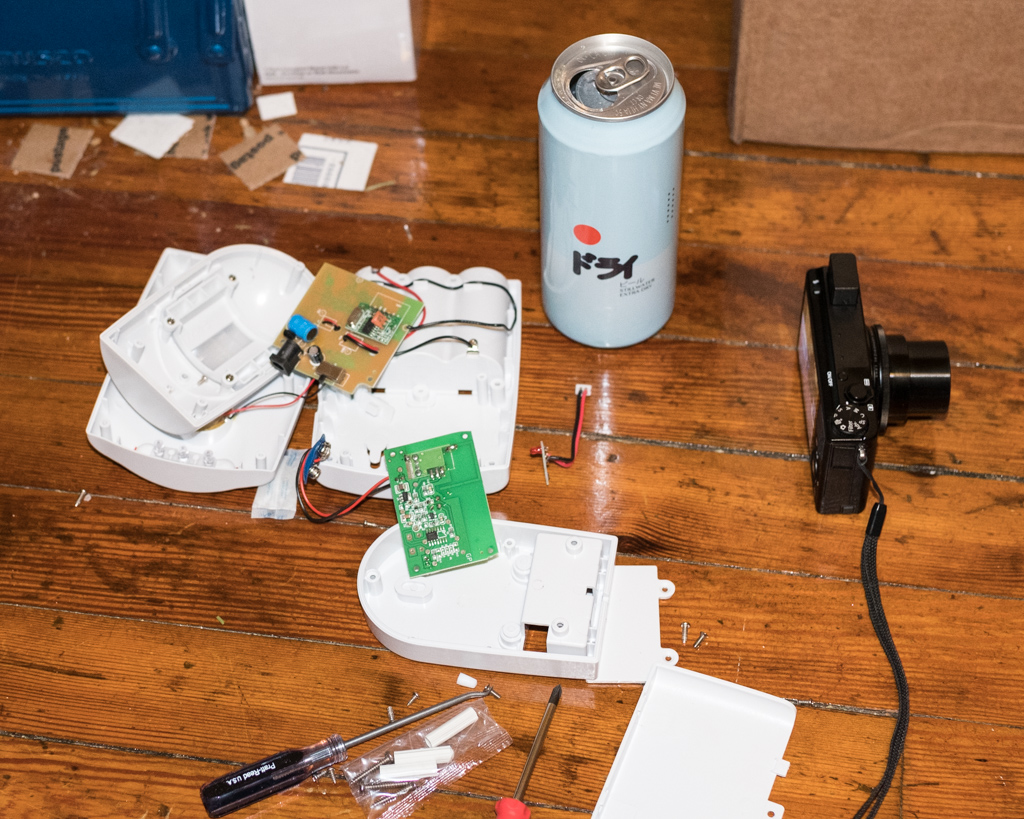
Techno-trash!!
- 8 comments, 11 replies
- Comment
Where was the drink hiding?
@PlacidPenguin In the drink can!
I these posts…
these posts…
@mikibell I’m glad! I feel like there wasn’t much to this one. There was… a lot of emptiness in these things.
@brhfl
Sometimes the best things are empty.
I’m impressed that you’re so hands on yet your nails look that good.
@cinoclav I do what I can.
@cinoclav @brhfl I came back to this thread to comment on your long nails. Totally jealous.
Oh, there was a reason that I mentioned the main board on the receiver was Revision 3: my lazy flash technique makes it hard to see, but the main board on the transmitter is Revision 6! Whaaaaat! How does it even work!?
So, is that Japanese beer?
@KDemo Baltimore-based phantom brewery, close enough
It’s a saison from Stillwater that uses sake rice as part of the malt bill. Tasty!
@KDemo @brhfl
Focusing on the important things I see.
@brhfl Stillwater and of love and regret are awesome
@brhfl I want a Sake Maker Kit
That “daughterboard” is an RF module. That’s how it’s done these days; a well-engineered RF module made inexpensively, then added to a design like a chip. They are cheap enough that it becomes more economically feasible to add one to your design rather than creating your own layout.
@PocketBrain Yep, I realize that. The thing I thought was borderline interesting was how the transmit side of things was actually cut out of the main PCB and dropped in flush. The receiving side of things was up on header pins which I’ve seen far more of.
@brhfl
You are totally making me late by being so entertaining.
I hold @Eluno entirely responsible.
Also @Eluno is at fault in that your nails are so much nicer than mine.
@f00l I accept the blame.
 My reply is no
My reply is no
In exchange, I attempt to curse with the Goat of Keratin Disruption. You will chip a nail when checking the time.
/8ball Does the curse take effect?
I soldered a short antenna wire to the transmitter of mine, the antenna is there next to your thumb in the pic, closed it back up with the antenna sticking out of the weep-hole, stuck it in my mailbox that’s 150’ from our house and then drilled a tiny hole in the mailbox for the antenna. The antenna dangles out the back of the box (towards the house).
Then, I uncoiled the receiver antenna wire, brought it out the top & stretched it out so it receives a better signal. I figured I could easily add to it if needed.
Now… Then the mailman decides to deliver our mail (anytime from noon to 8pm) it rings off inside the house! It works perfectly!!
ps… I had C cells from some LED lantern that I have…